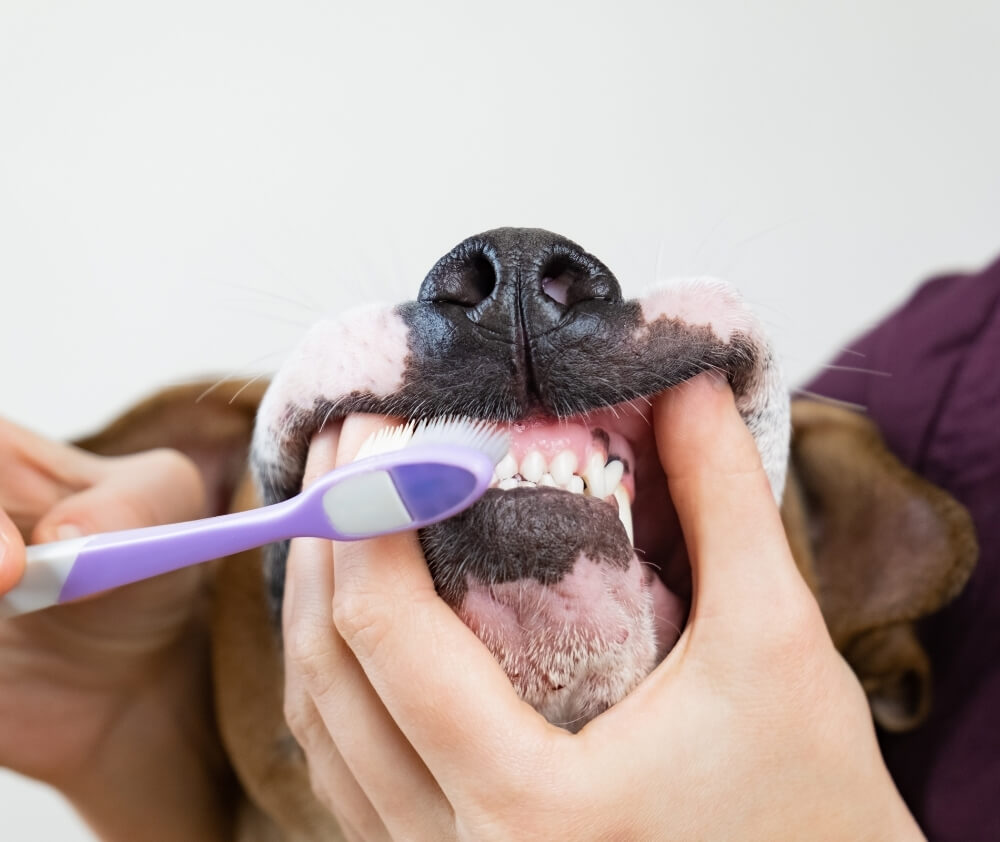Dental Health
Let’s learn how to rate your pet’s dental health!
Rate Your Pet's Dental Health
These are actual photographs of our patients taken to show various stages of dental disease. You can compare your own pet’s teeth to these images to see how good or bad their condition is. Each image shows the upper fourth premolar – the big chewing tooth – in the back of a dog’s mouth. Be sure to pull your pet’s lips back to look at the back teeth. Professional cleaning requires anesthesia, and you can see the endotracheal (breathing) tube – either orange or clear with a spring-like metal coil inside – in some of these pictures, along with the white gauze that holds the tube in place. Some dogs have dark pigment in their gums, and some do not; this is a perfectly normal variation.
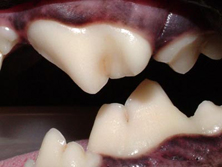
NICE JOB! No sign of plaque or calculus (tartar).
Home dental care is needed to maintain these healthy teeth and gums. Brushing your pet’s teeth regularly is ideal. There are also products like Hill’s T/D (Tartar Control Diet) available to help make home dental care easier. Ask your doctor for more information.
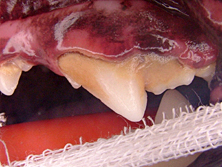
Stage 1 Mild gingivitis:
Some mild gingivitis and tartar buildup cases will respond to home dental care alone, such as mechanically removing the tartar with a dental diet, dental chews, and daily brushing.
In the picture, however, tartar covers part of the tooth. The margin of the attached gingiva (gums) is mildly inflamed. A professional dental exam and ultrasonic cleaning under anesthesia are needed to remove the tartar buildup in this dog. Following up with home dental care is very important to prevent the plaque and tartar from building up again.
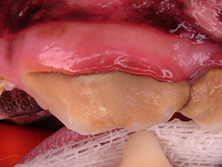
Stage 2 Moderate gingivitis:
All of this dog’s gums are inflamed and swollen, as represented by this upper premolar. This is painful, and the odor is noticeable. Dental cleaning to remove tartar is needed within the next month. A tartar control diet such as Hill’s T/D Prescription Diet and home dental care are needed afterward for prevention.
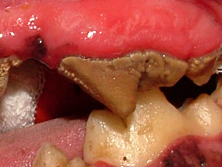
Stage 3 Severe gingivitis:
This dog’s gums are cherry red and bleeding. They are damaged by infection and tartar. A sore mouth and bad breath are evident. Dental cleaning to remove tartar is needed immediately. Again, a tartar control diet and home dental care are needed afterward to prevent recurrence.
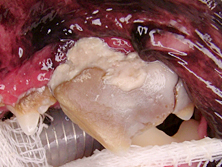
Stage 4 Periodontal disease:
Chronic infection is destroying the gums, teeth and bone. Bacteria are spreading through the body via the bloodstream and may damage the kidneys, liver, and heart. Dental cleaning to remove tartar is needed immediately. Some teeth may be loose and need extraction. Full mouth dental x-rays help the veterinarian decide which teeth need to be removed. Home dental care afterward is necessary for future prevention.

